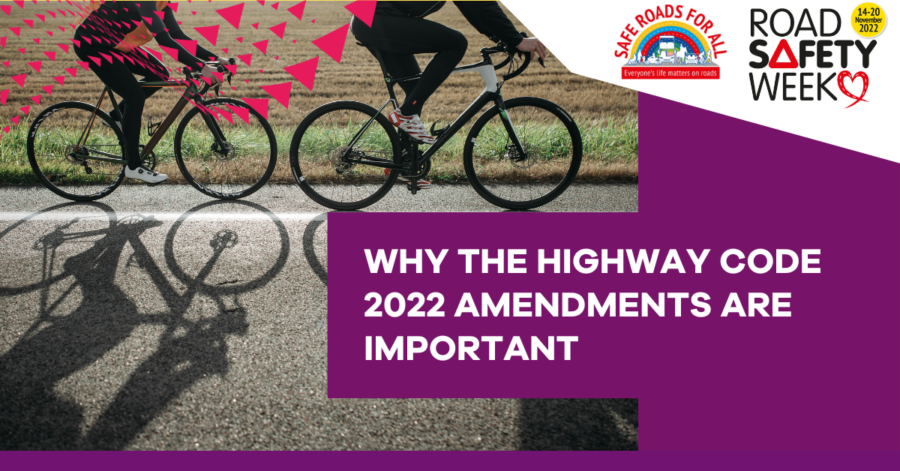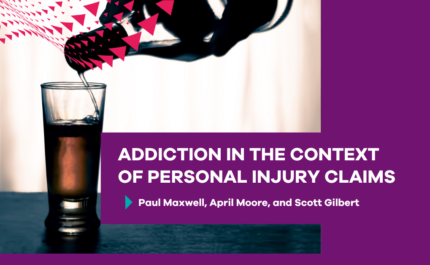
In this road safety week 2022, focused on ‘safe roads for all’, we’re highlighting the changes to the Highway Code that were introduced in January this year and looking at what lies behind the changes and why they are so important.
The 2022 amendments, aimed at improving safety on our roads, shine a spotlight on vulnerable road users by bringing in a formalised hierarchy of road users. This is something we haven’t seen before.
Prior to this, all road users were on an equal footing. That meant there was equal responsibility for our own safety and the safety of other road users. Now, drivers must be aware that pedestrians, cyclists, horse riders, and motorcyclists, as the most vulnerable road users, should take priority over trucks, vans, and cars. The fact is that motorcyclists, cyclists and pedestrians are the most likely to die on our roads.
The full hierarchy prioritises road users in the following order:
- Pedestrians
- Cyclists
- Horse riders
- Motorcyclists
- Cars and taxis
- Vans and minibuses
- HGVs
The intention is to highlight that those who may do the greatest harm have the greatest responsibility to reduce danger to others. It means in practice therefore that those driving the largest vehicles have the greatest responsibility to reduce the danger they pose to other road users. It doesn’t, however, remove the need for all road users to behave responsibly,. Even pedestrians still need to consider the safety of other road users.
In legal terms, the changes amount to clarification – nothing is changing in legislation. For example, drivers going up to 30mph And what was ‘pass wide and slow’ around horses has become ‘pass horses at a max speed of 10mph and give them 2m’.
This clearer guidance should mean it will be easier for police to prosecute.
The number of fatalities and serious injuries on UK roads
The rate of deaths and serious injuries tells the story behind the new hierarchy of road users. Despite huge advances in vehicle safety technology over the years, there has been very little reduction in UK road deaths or serious casualties since 2010 when national targets for reducing casualties were stopped.
On average, five people die and 84 are seriously injured on the UK’s roads every day (Source: Brake). In 2021, an estimated 1,558 people were killed on Britain’s roads, Department for Transport (DfT) figures show. This is an increase of 7% on 2020 – a year when traffic levels plummeted during the coronavirus pandemic.
The 2021 road traffic deaths and serious injuries in numbers
- Car occupant deaths / serious injuries = 682 / 9,702
- Pedestrian deaths / serious injuries = 361 / 5,032
- Motorcycle user deaths / serious injuries = 310 / 5,264
- Cyclist deaths / serious injuries = 111 / 4,353
- Bus, truck, van and unknown vehicle occupant deaths / serious injuries = 94 / 1,542
The vast majority of deaths were vulnerable road users and people in cars.
These numbers speak for themselves and bring some perspective to the need to improve road safety. After all, many of these accidents are preventable.
The most vulnerable road users most likely to be killed in a road accident
The biggest number of casualties are pedestrians (361 deaths in 2021) who are more likely to be killed in collisions with cars than any other road user. In fatal collisions between motor vehicles and pedestrians or cyclists, it is almost always the pedestrian or the cyclist who dies, not the occupants of the motor vehicle.
According to figures from the DfT, 111 cyclists were killed and over 4000 seriously injured in 2021. This figure is lower than in 2020 but higher than 2019. Many of the recent Highway Code amendments focus on cyclists, including passing distances, road positioning and overtaking.
Motorcyclists accounted for 20% of all road deaths in 2020 and 32% of motorcycle accidents resulted in riders being left with severe injuries. This is the highest casualty rate of any road-user group per miles travelled, despite motorcyclists only making up 1% of motor vehicle traffic.
In the last few years there has been a big rise in road traffic incidents involving horses and riders. In 2021 46 equine deaths were reported, and 118 injured along with 130 human injuries. The British Horse Society is delighted to see the positive changes to the Highway Code being implemented.
Read more on the changes on the Government website.
Information sources
https://www.brake.org.uk/get-involved/take-action/mybrake/knowledge-centre/uk-road-safety
https://begin-motorcycling.co.uk/uk-motorcycle-accident-statistics/
https://review42.com/uk/resources/motorcycle-accidents-statistics/



